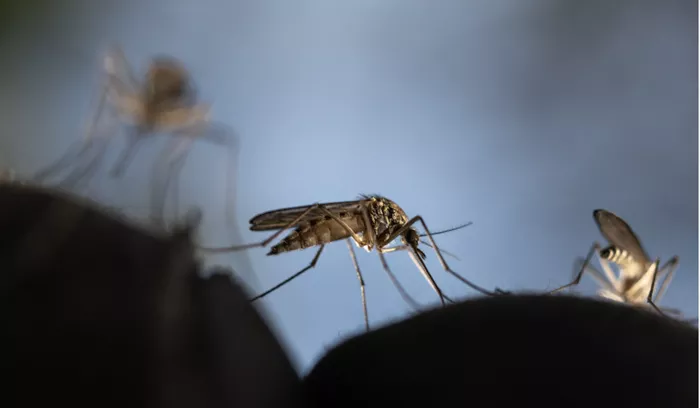A 41-year-old man from New Hampshire passed away last week after contracting the rare and deadly mosquito-borne illness known as Eastern Equine Encephalitis (EEE) or “Triple E.” This marks the first human case in New Hampshire in a decade. This year, four other cases of EEE have been reported across Wisconsin, New Jersey, Massachusetts, and Vermont.
Although the number of cases remains small, the presence of Triple E in these regions has alarmed public health officials and researchers. The virus poses a serious threat, both now and in the future, as climate change may exacerbate its spread. EEE, for which no cure exists, can lead to severe flu-like symptoms and seizures within 4 to 10 days of exposure. The virus is lethal, with a mortality rate of 30 to 40 percent. Survivors often suffer permanent neurological damage. Due to the high mortality rate, Massachusetts has implemented aggressive measures, including the spraying of insecticides in 10 communities identified as “critical” or “high risk” for EEE. Local governments have closed parks from dusk until dawn and advised residents to stay indoors after 6 p.m., the time when mosquitoes are most active.
Like the West Nile virus, which also threatens Americans each summer, Triple E is influenced by environmental conditions. These conditions, including heat and humidity, are becoming more favorable for mosquitoes due to climate change.
“We’ve observed an increase in EEE activity over the past decade or so,” said Theodore G. Andreadis, a seasoned researcher who has studied mosquito-borne diseases for 35 years at the Connecticut Agricultural Experiment Station. “We’re also seeing the virus emerge in regions further north where it was previously unheard of.” While the precise factors driving these changes are still unclear, Andreadis emphasizes that climate change is a significant contributor, particularly as it enables the virus to spread to new areas.
The first recorded outbreak of EEE occurred in horses in Massachusetts during the 1830s, which is why one of the three Es stands for “equine.” It wasn’t until 1934 that mosquitoes were identified as potential carriers of the disease, and the first human cases were documented in Massachusetts in 1938. That year, 38 human cases were reported, with 25 proving fatal. Historically, human cases were mostly confined to Gulf Coast states and occasionally the Northeast. From 1964 to 2002, the Northeast saw fewer than one case per year on average. However, from 2003 to 2019, this average increased to between four and five cases per year, indicating a concerning trend.


